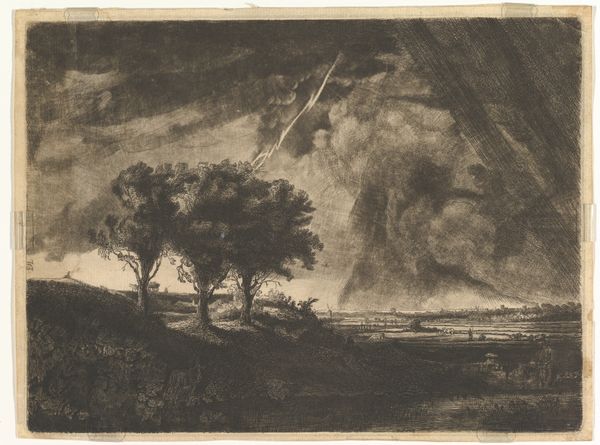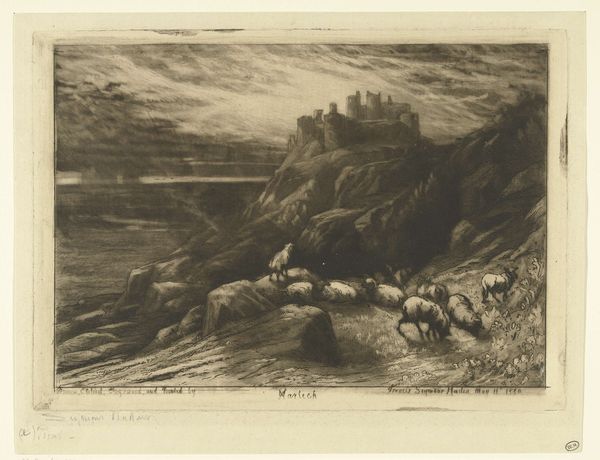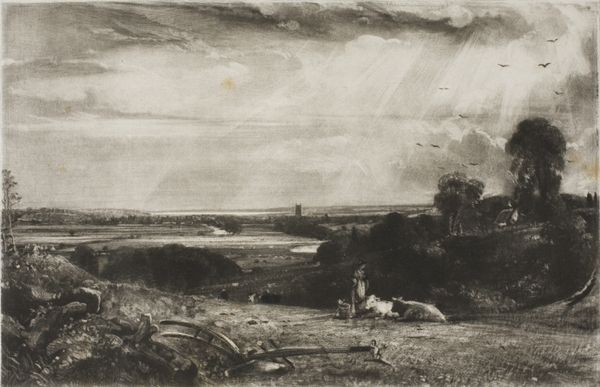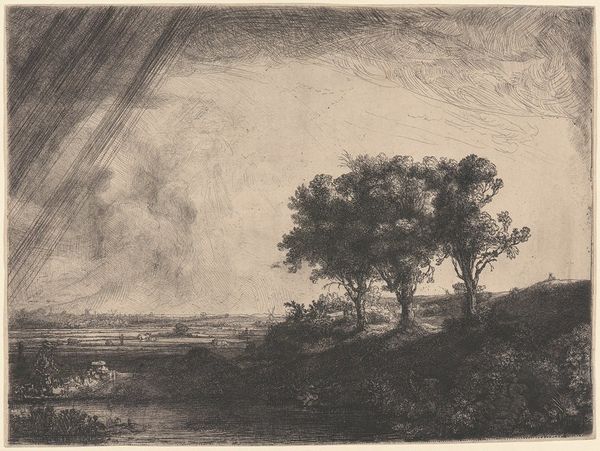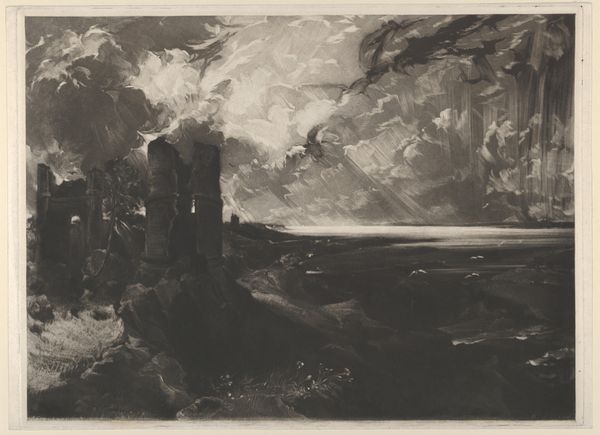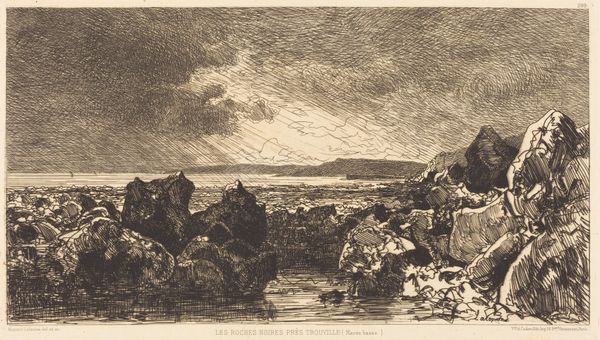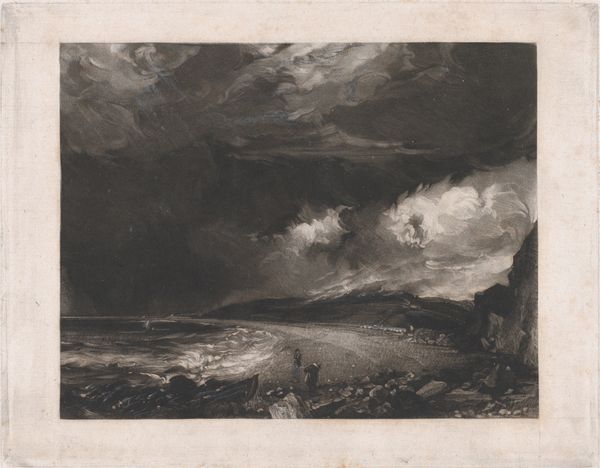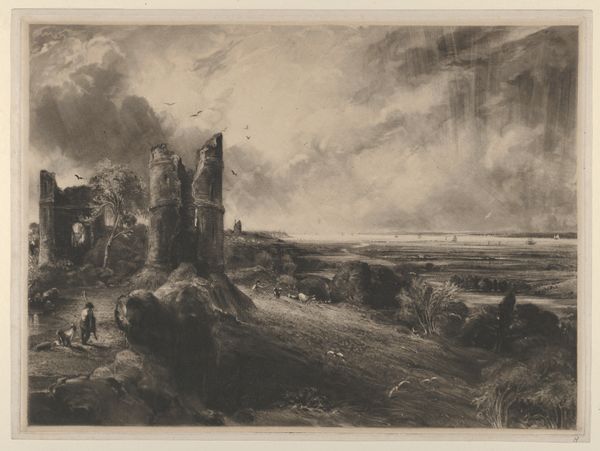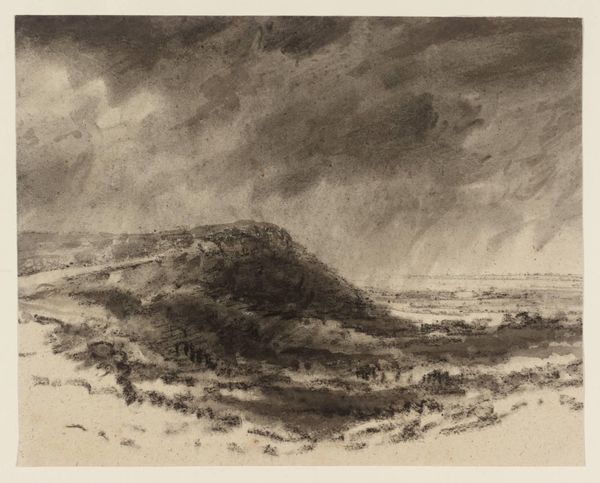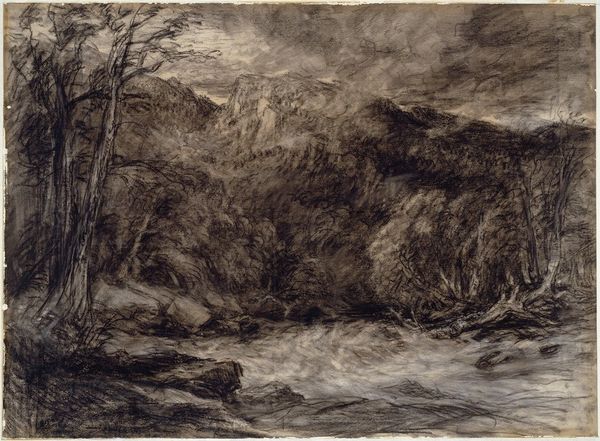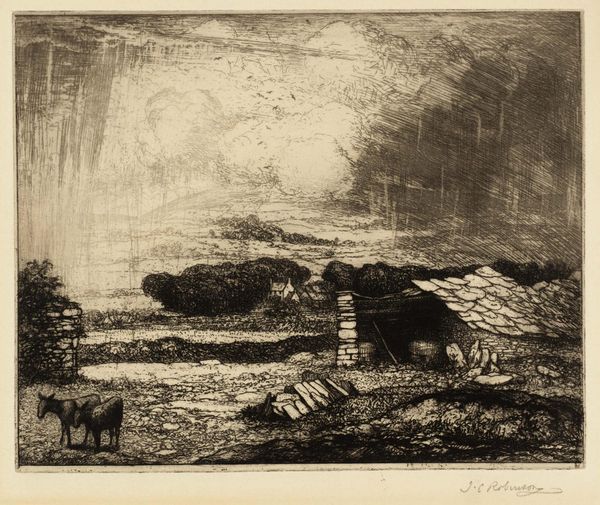
drawing, print, etching, paper
#
drawing
# print
#
etching
#
landscape
#
paper
#
romanticism
Dimensions: 141 × 191 mm (image); 172 × 221 mm (plate); 296 × 440 mm (sheet)
Copyright: Public Domain
Curator: Immediately striking, isn’t it? The gloom is practically palpable. Editor: It is rather… oppressive. All that etched darkness converging to one area. Before we get into that, though, let's offer some context. This is "A Heath," an etching and print by David Lucas after John Constable, made around 1831. It's currently part of the Art Institute of Chicago's collection. Curator: Right, and I think understanding the sociopolitical currents of 19th-century England—particularly the relationship between the Romantic movement and anxieties surrounding industrialization and urbanization—is crucial here. This "Heath" isn’t just a landscape; it's a reflection on the changing role of the rural working class. Editor: Agreed. Look at how the material informs that reading. Etching allows for incredibly fine detail. Consider the labor of the artisan meticulously creating these tiny lines to convey the depth of the landscape and cloud formations. How does the mechanization implied by printmaking mirror or challenge the social issues being depicted? The materials speak volumes. Curator: Precisely. There's an undeniable romanticization of rural labor happening—look at that farmworker by the horse-drawn cart, almost a tableau—yet that very idealization masks the realities of poverty and exploitation. The dark, brooding skies become symbolic of an era on the precipice. The sky really appears to be bearing down on this group and on their way of life. Editor: That's valid. And what about the circulation of prints at the time? How accessible was art like this? Who owned the means of reproduction, and how did the accessibility or lack thereof inform the representation of laborers here? Curator: Exactly! And to push that point even further, whose story isn't being told here? Where are the voices of dissent? We only get glimpses of toil without commentary or protest. Editor: Ultimately, the skill and the method are on full display. Seeing that connects us back to both nature, and this artistic production as an industry itself. It's a complex, mediated relationship we have to nature in that sense. Curator: I agree completely, that's why this image lingers for me. Editor: Well said, lets move onto the next exhibit.
Comments
No comments
Be the first to comment and join the conversation on the ultimate creative platform.
